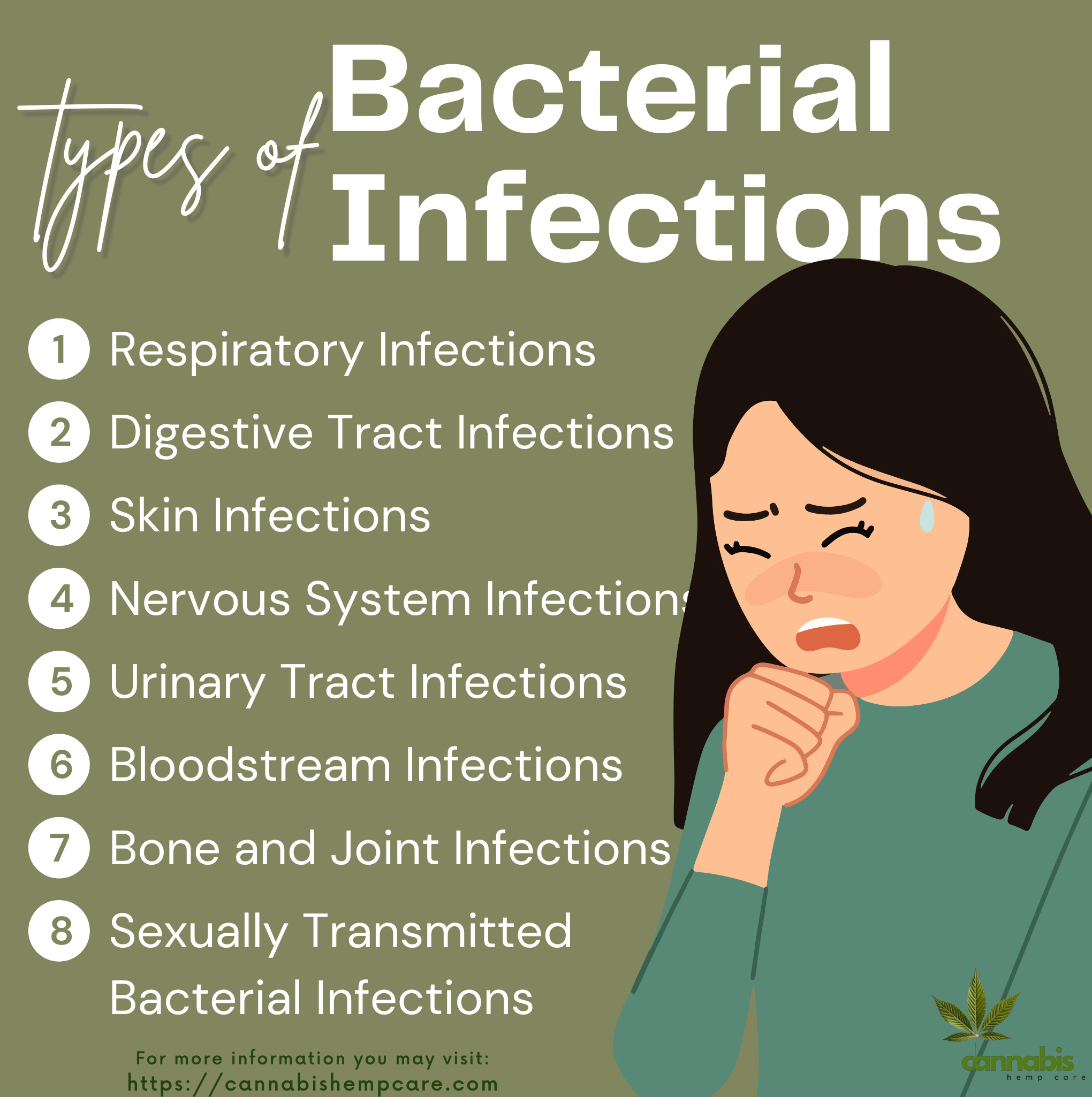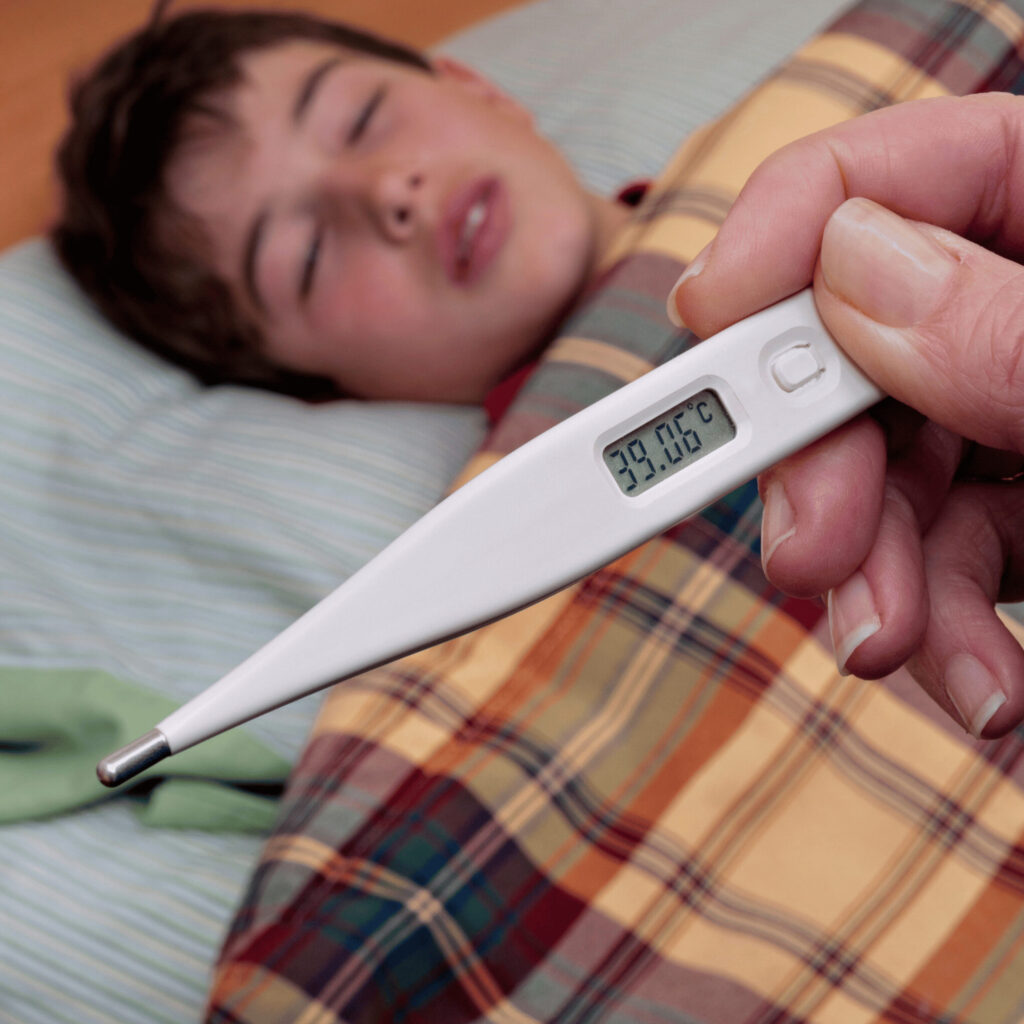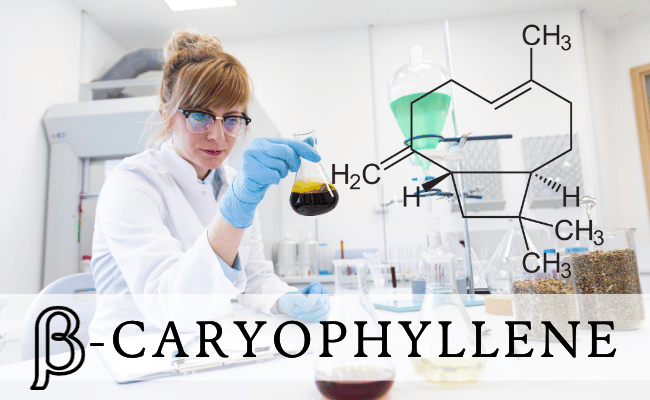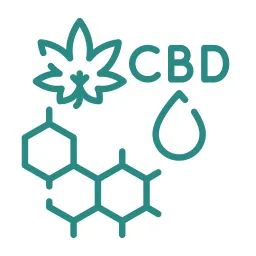Bacteria are tiny, single-celled organisms found everywhere – from the depths of the ocean to the inside of our bodies1. While many bacteria are harmless, some can cause illnesses. This blog aims to shed light on bacterial infections, how they are caused, diagnosed, and treated, and ways to prevent them.
What is Bacterial Infections?
Bacterial infections refer to diseases caused by bacteria, which are single-celled microorganisms that can be found everywhere. They can exist in soil, water, plants, animals, and even inside the human body.
While many bacteria are harmless and some are even beneficial (such as those involved in digestion), others can cause diseases.
Types of Bacterial Infections
Bacterial infections can affect various parts of the body and can range from mild to severe. It’s crucial to understand the different types to ensure appropriate care and treatment. This section provides a detailed overview of various bacterial infections based on their nature and the body parts they commonly affect.

Respiratory Infections
- Tuberculosis (TB): Caused by Mycobacterium tuberculosis, this severe lung infection can also affect other parts of the body2.
- Bacterial Pneumonia: Infections like Streptococcus pneumoniae can lead to inflammation in the lungs.
- Whooping Cough (Pertussis): A highly contagious respiratory disease caused by Bordetella pertussis.
Digestive Tract Infections
- Salmonellosis: Caused by Salmonella species, it is commonly associated with contaminated food or water3.
- Shigellosis: Results from Shigella species, leading to dysentery symptoms.
- Gastric Ulcers: Some are caused by Helicobacter pylori which affects the stomach lining.
Skin Infections
- Cellulitis: A common skin infection caused by bacteria entering through a cut or crack in the skin.4
- Impetigo: A contagious skin infection often seen in children, caused by Staphylococcus or Streptococcus bacteria.
- MRSA (Methicillin-resistant Staphylococcus aureus): A type of staph bacteria resistant to certain antibiotics.
Nervous System Infections
- Bacterial Meningitis: An inflammation of the membranes surrounding the brain and spinal cord, caused by various bacterial pathogens.
- Tetanus (Lockjaw): Caused by the bacterium Clostridium tetani, it affects the nervous system.
Sexually Transmitted Bacterial Infections
- Chlamydia: Caused by Chlamydia trachomatis, it’s one of the most common STIs.
- Gonorrhea: Another widespread STI caused by the bacterium Neisseria gonorrhoeae.
- Syphilis: A more severe STI caused by the bacterium Treponema pallidum.
Urinary Tract Infections
- Cystitis: Inflammation of the bladder, often due to Escherichia coli (E. coli).
- Pyelonephritis: A kidney infection, commonly a progression from a bladder infection.
Bloodstream Infections
- Septicemia (Sepsis)5: A serious infection that occurs when bacteria enter the bloodstream.
Bone and Joint Infections
- Osteomyelitis: An infection in the bone.
- Septic Arthritis: Infection in a joint, commonly the knee.
Bacterial infections are vast in their type and can affect almost every part of the human body. Proper identification, early diagnosis, and timely treatment are essential to manage these infections effectively and prevent complications.
Symptoms of Bacterial Infections
Bacterial infections can manifest in numerous ways, depending on the type of bacteria and the body part affected. Recognizing these symptoms is crucial for timely diagnosis and treatment.
Here, we outline the general and specific symptoms that can arise from bacterial infections.
General Symptoms
- Fever: A raised body temperature often indicates the body’s attempt to combat an infection6.
- Fatigue: Bacterial infections can drain energy, leading to an unusual feeling of tiredness.
- Chills: Accompanying fever, chills are another common body response to infections.
- Body Aches: Muscular soreness or general body discomfort can be symptomatic of several bacterial infections.
- Swollen Lymph Nodes: These glands swell in response to infections as they produce more white blood cells.
Respiratory Symptoms
- Cough: A persistent cough, especially if accompanied by mucus or blood, may suggest a bacterial respiratory infection.
- Shortness of Breath: Difficulty in breathing or rapid breathing can result from bacterial infections like pneumonia.
- Chest Pain: Infections in the lungs might cause pain or discomfort in the chest area.
Digestive System Symptoms
- Diarrhea: Certain bacterial infections target the gastrointestinal tract, leading to loose or watery stools.
- Nausea and Vomiting: Bacterial gastroenteritis can result in a feeling of unease in the stomach.
- Abdominal Pain: This discomfort might be consistent or come in cramps, varying with the type of infection.
Skin Symptoms
- Redness: A common sign of a skin bacterial infection is a noticeable reddening of the affected area.
- Swelling: The skin might become puffy or swollen due to an infection beneath it.
- Pus: Some bacterial skin infections lead to the formation of pus-filled blisters or boils.
Urinary Tract Symptoms
- Pain during Urination: A stinging or burning sensation might indicate a urinary tract bacterial infection.
- Frequent Urination: An unusual urge to urinate frequently can be a symptom of a bladder infection.
- Cloudy or Bloody Urine: The appearance of urine might change due to bacterial presence.
Neurological Symptoms
- Headache: Some bacterial infections can cause persistent or severe headaches.
- Stiff Neck: Meningitis, a bacterial infection of the membranes surrounding the brain and spinal cord, may lead to neck stiffness.
- Confusion: Advanced or severe bacterial infections may affect mental clarity.
Reproductive System Symptoms
- Unusual Discharge: It can be a sign of bacterial sexually transmitted infections.
- Painful Intercourse: Bacterial infections like bacterial vaginosis can cause discomfort during sexual activity.
Other Symptoms
- Joint and Muscle Pain: Discomfort, pain, or stiffness in the joints or muscles.
- Headaches: Persistent pain or pressure in the head.
- Mental Confusion: In certain bacterial infections, especially if they affect the brain, there may be confusion, difficulty concentrating, or other cognitive changes.
The symptoms of bacterial infections are diverse and can affect various parts of the body. If any of these symptoms are observed, especially if they persist or worsen, it is advisable to consult a healthcare professional for a proper diagnosis and appropriate treatment.

Causes of Bacterial Infections
Bacterial infections arise when harmful bacteria enter and multiply within the body. Several factors and conditions enable these bacteria to invade and thrive. This section delves into the primary causes of bacterial infections.
Direct Contact
- Person-to-Person: Infections such as impetigo or certain sexually transmitted infections (STIs) like gonorrhea spread through direct skin-to-skin contact.
- Animal-to-Person: Individuals can contract diseases like brucellosis upon contact with infected animals or their by-products.
Indirect Contact
- Contaminated Surfaces: Bacteria can survive on various surfaces. People can get infections by touching these surfaces and subsequently their face.
- Medical Instruments: Improperly sterilized surgical or medical instruments can be a source of infection.
Ingestion
- Contaminated Food and Water: Diseases like salmonellosis or cholera result from consuming bacteria-contaminated food or water.
- Undercooked Foods: Bacteria present in raw or undercooked food items can lead to infections when consumed.
Airborne Transmission
- Respiratory Droplets: Tuberculosis is an example of an infection that spreads through droplets released when an infected person coughs or sneezes.
Vector-Borne Transmission
- Ticks and Fleas: Bacteria responsible for diseases like Lyme disease are transmitted to humans through tick bites.
- Mosquitoes: Some bacterial diseases, such as tularemia, spread through mosquito bites.
Other Causes
- Bodily Fluids: Bacterial infections can occur from exposure to infected blood, breast milk, or during childbirth.
- Compromised Immune System: A weakened immune system reduces the body’s defense against bacteria, increasing susceptibility to infections.
Bacterial infections have varied causes, from direct physical contact to consumption of contaminated food. Awareness of these causes can guide effective prevention and intervention strategies.
Risk Factors of Bacterial Infections
Bacterial infections can occur in any individual; however, certain risk factors may increase the susceptibility of an individual to these infections. By understanding and identifying these risk factors, it’s possible to take preventive measures and reduce the likelihood of contracting a bacterial infection.
Compromised Immune System
Individuals with weakened immune systems are more susceptible to bacterial infections. This can be due to:
- Medical conditions like HIV/AIDS, diabetes, or cancer.
- Use of immunosuppressive drugs, such as those used in chemotherapy or organ transplants.
Age
Certain age groups are more vulnerable to specific bacterial infections:
- Infants and young children: Their immune systems are still developing, making them more prone to infections like bacterial meningitis or whooping cough.
- Elderly individuals: With age, the immune system becomes less robust, leading to increased susceptibility to infections like pneumonia.
Hospitalization
Being in a hospital or healthcare setting can expose individuals to specific bacterial infections, including:
- MRSA (Methicillin-resistant Staphylococcus aureus): Often contracted in healthcare settings.
- Clostridium difficile: Associated with long-term antibiotic use in hospitals.
Invasive Procedures or Devices
Medical devices or procedures can introduce bacteria into the body:
- Catheters: Especially urinary catheters, can lead to urinary tract infections.
- Surgical procedures: Particularly if post-operative care isn’t optimal or there’s a breach in sterility.
Lifestyle and Behavior
Certain behaviors or practices can increase the risk:
- Unprotected sex: This can lead to sexually transmitted bacterial infections like chlamydia, gonorrhea, or syphilis.
- Tattooing or piercing: If done with non-sterile equipment.
- Smoking: Increases the risk of respiratory bacterial infections.
Travel and Exposure
Traveling or residing in certain regions can expose individuals to region-specific bacterial infections:
- Traveling to areas with poor sanitation: Increases the risk of gastrointestinal bacterial infections.
- Exposure to certain animals: Such as contracting leptospirosis from contaminated water or tularemia from infected animals.
Chronic Conditions
Certain long-term health conditions can make individuals more susceptible:
- Chronic lung conditions: Such as chronic obstructive pulmonary disease (COPD) can increase the risk of respiratory bacterial infections.
- Kidney disease: Can elevate the risk of urinary bacterial infections.
While bacterial infections can affect anyone, being aware of specific risk factors can help in the early detection, prevention, and management of these infections. Maintaining a healthy lifestyle, practicing good hygiene, and taking preventive measures can significantly reduce the risks associated with bacterial infections.
Diagnosis of Bacterial Infections
Identifying and accurately diagnosing bacterial infections is crucial for effective treatment. Different methods and techniques aid clinicians in pinpointing the exact type of bacterial infection and its severity.
Clinical Examination
The first step in diagnosing any condition:
- Medical History: A detailed discussion about symptoms, onset, duration, and any potential exposure to sources of infection.
- Physical Examination: The physician inspects, palpates, percusses, and auscultates various body parts to identify signs of infection, such as swelling, redness, or warmth.
Laboratory Tests
Often, samples from the body are taken to confirm the presence of bacteria:
- Blood Tests: Elevated white blood cell count can indicate an infection.
- Culture Tests: Samples from urine, throat swabs, or other body fluids are cultured in labs to identify the specific type of bacteria causing the infection.
Imaging Studies
While not specific for bacteria, they can indicate infections:
- X-rays: Used primarily for suspected lung infections like pneumonia.
- CT Scans: Offer detailed images and can pinpoint abscesses or internal infections.
- Ultrasound: Used for infections in soft tissues or to view internal organs.
Specialized Tests
In some instances, more specialized diagnostic tests might be employed:
- Lumbar Puncture: Used if meningitis is suspected, where a sample of cerebrospinal fluid is taken and analyzed.
- Biopsy: In some skin infections or internal abscesses, a tiny tissue sample can be taken and examined microscopically.
Antibiotic Sensitivity Testing
Once bacteria are cultured from a sample:
- Disc Diffusion Test: Small discs containing antibiotics are placed on a culture of the bacteria to see which antibiotic effectively stops its growth.
- Serial Dilution Test: Determines the least amount of antibiotic needed to inhibit the bacterial growth, guiding treatment decisions.
Accurately diagnosing bacterial infections allows for targeted and effective treatment, minimizing complications and promoting faster recovery. It’s crucial to consult a medical professional if a bacterial infection is suspected, so the appropriate tests can be administered, and an accurate diagnosis can be made.

Treatment of Bacterial Infections
The treatment of bacterial infections primarily revolves around the use of antibiotics, but the approach can vary based on the severity, location, and type of bacteria involved. Timely and appropriate intervention can halt the progression of the infection and prevent complications.
Antibiotics
The primary mode of treatment for bacterial infections:
- Broad-spectrum antibiotics: These combat a wide range of bacteria and are often used initially when the specific bacterium isn’t yet identified.
- Narrow-spectrum antibiotics: Target a specific type of bacteria, and are preferred once the bacteria are identified to minimize the impact on beneficial bacteria in the body.
- Duration and Dosage: It’s essential to complete the prescribed course, even if symptoms improve, to ensure all bacteria are eliminated and to prevent antibiotic resistance.
Topical Treatments
For infections on the skin or external body parts:
- Antibiotic creams or ointments: Directly applied to the infected area to reduce bacteria and alleviate symptoms.
- Antiseptic solutions: Can cleanse and disinfect wounds or infected areas.
Intravenous (IV) Antibiotics
For severe or systemic infections:
- Hospital Admission: Some infections, especially those resistant to oral antibiotics or in vital organs, may require hospitalization for IV antibiotics.
Surgery
In certain situations, a surgical intervention might be necessary:
- Drainage: Abscesses or pockets of pus may need to be surgically drained.
- Debridement: Infected tissue may need to be removed to prevent the spread of the infection.
Supportive Care
Complements primary treatments:
- Pain Relievers: To manage pain associated with some bacterial infections.
- Fever Reducers: Like acetaminophen or ibuprofen, can be used to manage fever and inflammation.
- Hydration: Maintaining fluid balance is crucial, especially if the infection causes diarrhea or vomiting.
Probiotics
Beneficial when taking antibiotics:
- Healthy Bacteria: Antibiotics can disturb the natural balance of bacteria in the gut. Probiotics can help restore this balance.
Prevention of Antibiotic Resistance
Crucial for future treatment efficacy:
- Appropriate Use: Only take antibiotics when prescribed and always complete the course.
- Avoid Overuse: Do not demand antibiotics for viral infections, like the common cold, where they’re ineffective.
Timely and appropriate treatment of bacterial infections ensures effective recovery and reduces the risk of complications. Always consult with a healthcare professional to determine the best treatment plan based on the specific infection and individual health considerations.

Complications of Bacterial Infections
Bacterial infections, if not treated promptly or adequately, can lead to various complications. These complications can range from localized issues to systemic problems that may have long-term health consequences.
Here’s an overview of potential complications that may arise from untreated or improperly managed bacterial infections.
Septicemia (Blood Poisoning)
A severe and potentially life-threatening complication:
- Occurs when bacteria enter the bloodstream and spread throughout the body. Can lead to septic shock, organ failure, and death if not promptly treated.
- Symptoms:
- Fever
- Rapid heartbeat
- Rapid breathing
- Confusion
- Fever
Abscess Formation
A collection of pus that arises from the body’s response to infection:
- Can form in any part of the body, including the skin, organs, and brain. Often requires drainage and antibiotics.
Endocarditis
An infection of the inner lining of the heart:
- Usually occurs when bacteria from another part of the body, such as the mouth, spread through the blood and attach to damaged areas of the heart.
- Symptoms:
- Fever
- Chills
- Fatigue
- Aching joints and muscles
- Shortness of breath
- Swelling in the feet, legs, or abdomen
- Fever
Meningitis
An inflammation of the membranes surrounding the brain and spinal cord:
- Can lead to brain damage, hearing loss, and death if not treated swiftly.
- Symptoms:
- Fever
- Headache
- Stiff neck
- Light sensitivity
- Altered mental status
- Fever
Kidney Damage
Resulting from untreated urinary tract infections or certain bacterial toxins:
- Can progress to chronic kidney disease or kidney failure.
Reactive Arthritis
A joint inflammation that occurs as a reaction to a bacterial infection in another part of the body:
- Often seen after infections with bacteria such as Salmonella, Shigella, Chlamydia, or Campylobacter.
- Symptoms:
- Joint pain and swelling
- Eye inflammation
- Urinary problems
- Joint pain and swelling
Respiratory Failure
Particularly from severe pneumonia or TB infections:
- The inability of the lungs to provide the body with adequate oxygen or to rid the body of carbon dioxide leads to the need for mechanical ventilation.
Antibiotic Resistance7
A by-product of the misuse or overuse of antibiotics:
- Bacteria become resistant to the effects of antibiotics, making infections harder to treat and increasing the risk of prolonged illness, complications, and death.
The potential complications from bacterial infections highlight the importance of early detection, appropriate treatment, and adhering to prescribed treatment plans. Monitoring for symptoms and seeking timely medical care can mitigate the risk of these severe outcomes.
Prevention of Bacterial Infections
Bacterial infections can pose significant health risks. Fortunately, several measures can be taken to reduce the risk of contracting or spreading these infections.
Here’s an overview of essential preventive strategies to combat bacterial infections.
Hand Hygiene
- Handwashing is one of the most effective ways to prevent the spread of many types of bacterial infections.
- Wash hands regularly with soap and water for at least 20 seconds, especially after using the restroom, before eating, and after coughing or sneezing. If soap and water are unavailable, use an alcohol-based hand sanitizer.
Vaccination
- Vaccines stimulate the immune system to recognize and combat specific bacteria, preventing certain bacterial diseases.
- Vaccines for bacterial infections include those against pertussis (whooping cough), diphtheria, tetanus, and pneumococcal disease.
- Stay updated with recommended vaccines for different age groups and populations.
Safe Food Handling
- Reduces the risk of food-borne bacterial infections, cooks meat to the recommended temperature, wash fruits and vegetables, avoid cross-contamination, and refrigerate perishables promptly.
Safe Water
- Drink only from trusted water sources. If uncertain, boil or use water purification methods before drinking.
- Avoid swallowing water when swimming in lakes, ponds, or pools.
Avoiding Contact with Infected Individuals
- Limit close contact with people who have bacterial infections. Stay away from those who are sick and avoid sharing personal items like towels, razors, or eating utensils.
- In outbreak situations, consider avoiding densely populated areas to reduce exposure risk.
Safe Sexual Practices
- Use condoms or dental dams to reduce the risk of sexually transmitted bacterial infections.
- Get screened regularly if sexually active, and seek medical advice if symptoms appear.
Proper Wound Care
- To prevent skin and soft tissue infections, clean cuts and scrapes immediately with soap and water, apply an antibiotic ointment if needed, and cover with a sterile bandage.
Proper Antibiotic Use
- Take antibiotics only when prescribed by a healthcare professional and complete the prescribed course, even if symptoms improve.
- Misuse, such as not completing a course or using them without a prescription, can lead to antibiotic resistance, making infections harder to treat.
Environmental Cleanliness
- To reduce the presence of harmful bacteria in surroundings. Regularly disinfect surfaces, especially in kitchens and bathrooms, and maintain good ventilation.
Safe Travel Practices
- To prevent acquiring bacterial infections that may be prevalent in certain areas, drink bottled or boiled water, avoid street food, and get recommended vaccinations before traveling.
Preventing bacterial infections is an integral part of maintaining individual and public health. Adopting these measures, from simple handwashing to the judicious use of antibiotics, can make a significant difference in curbing the spread and impact of bacterial diseases.





































